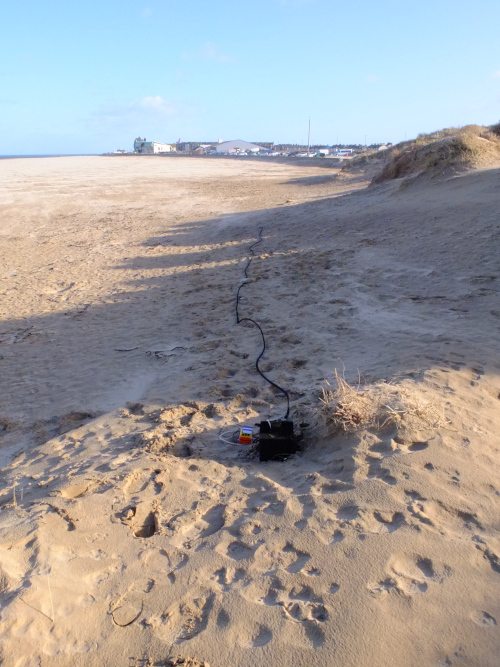 |
Dr Ian Robinson |
|---|---|
| Physics Projects 'n Stuff |
2022 ... 2021 ... 2020 ... 2019 .. 2018 .. 2017
8/12/2019 - Chopper!
On 3rd December I heard a helicopter passing - probably a Chinook. Clearly picked up by both my infrasound monitors a simple wavelet analysis shows a clear signal in the 5-12Hz range, with clean sin components at 2-3Hz - (image bottom right). I am planning on building a 3rd portable device with a somewhat more sensitive mems sensor over Christmas. It may be worth extending the sampling rate to ~100Hz permitting signals up to 50Hz to be captured. A day hanging around the local airfield may provide interesting data and a chance for my son to do some analysis on this.
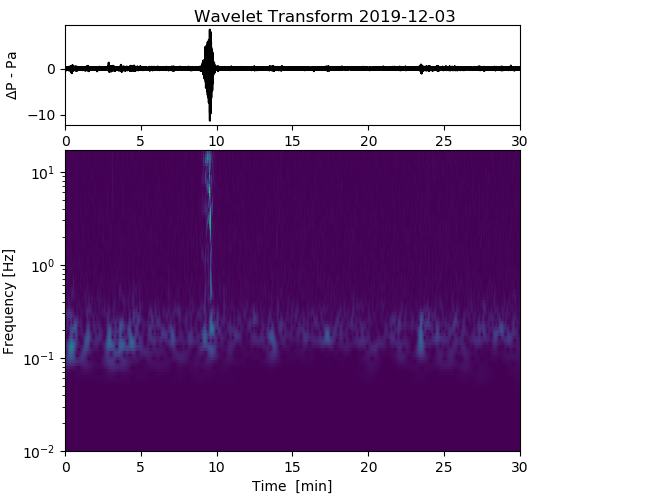
|
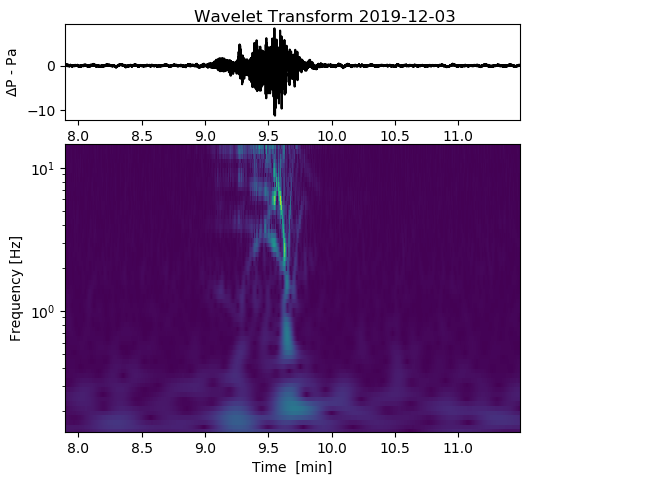
|

|
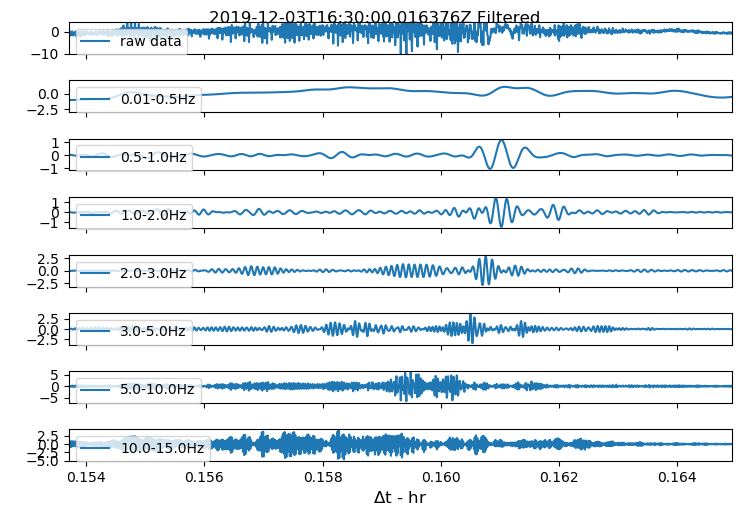
|
I feel this may have potential for early detection of approaching helicopters.
---------------------------
24/11/2019 - Matched Sapphires - Chrysanthemum
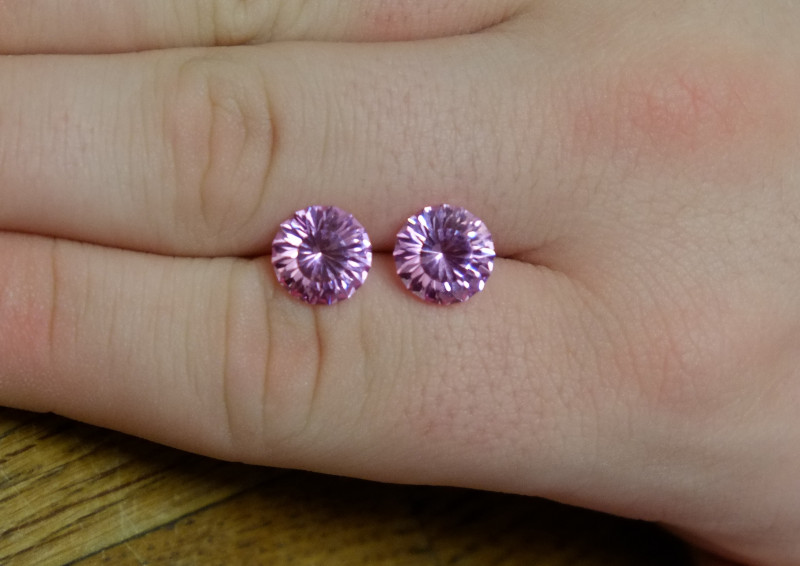
'Chrysanthemum', design by Quincy D Howell, 81 facets A matched pair of fairly large (10mm) precision cut sapphires each of 5.3ct.
---------------------------
16/11/2019 - F.P.G.A. - almost went M.S!!

Well ... just getting the programming environment working under linux was a precipitous learning curve. Interfacing with the chip was particularly tricksy. I almost gave up and was actually burning the hated Windows 10 onto a disc for a laptop when I tried one last thing and -- ta-ra, USB SoundBlaster programmer working.
VHDL though is a delightful language. My first tiny program reads the ten switches displaying their HEX equivalents. This would take 50-100 logic gates (link) yet is achieved with a few lines of code (link). I see no reason at all why pre-university students should be unable to build fairly complex logic circuits so long as they are provided with a working development environment.
---------------------------
26/10/2019 - F.P.G.A. - new toy.
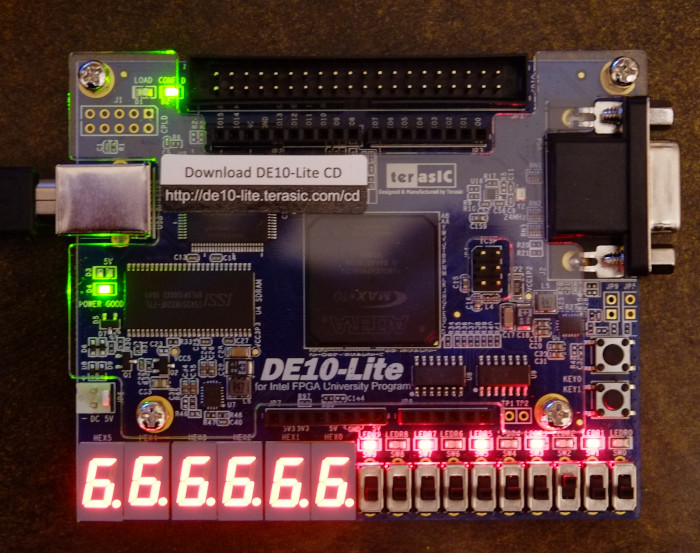
After 40 years of programming I fancied something a bit different to which end I have been learning V.H.D.L. a hardware definition language for specifying the layout of digital circuits. It would be interesting to have a school club in which pre-university students extend a basic knowledge of digital circuits by using VHDL to "program" an F.P.G.A. This could look stunning on a university or degree apprenticeship application.
I specifically want to skill myself up to configuring F.P.G.A.s for seismic signal processing - such as a 'rolling' F.F.T. wavlet transform. Along the way I am keeping notes for a short school level course. More later.
The board shown above is a remarkable piece of development kit. The MAX10 F.P.G.A. has approx 50,000 6-input logic elements, two 12 bit A.D.C.s, an accelerometer and a decent chunk of onboard memory. The 7 element L.E.D.s and 12 switches should make it more appealing to a novice - all for less than £100 shipped.
---------------------------
31/8/2019 - Antenna Tuning
Myself and my eldest had a go at tuning the SID detector antenna. This is a dual loop antenna, the primary loop - tuned with a capacitor and the secondary loop feeds the tuner/amplifier. I reasoned that feeding a signal into the secondary then viewing the p.d. across the primary would work. Not sure, there was clear resonance but varying the capacitor seemed to have little effect.
We will try it again, this time picking up a real signal with the amplifier and a variable air gap capacitor.
---------------------------
31/8/2019 - Oxford Stone #2
Loosely based on a design by Marco Voltolini
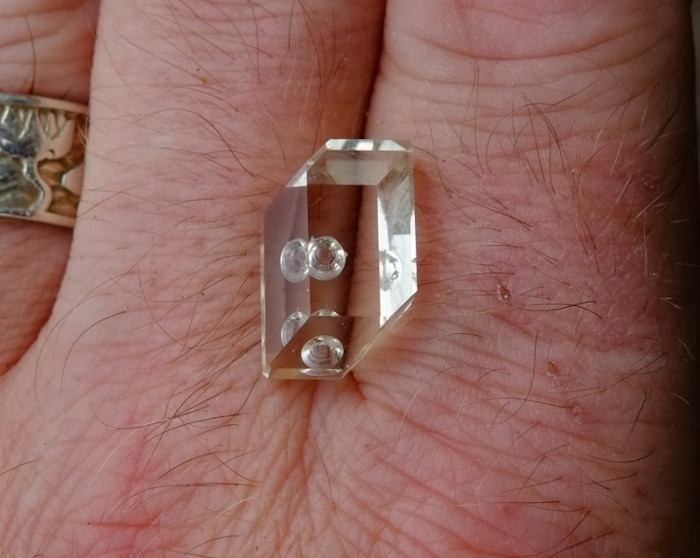
---------------------------
30/8/2019 - Aurora Software
Rather pleased to see that someone else has found it useful ... Geomagnetic Field.
---------------------------
15/8/2019 - Oxford Stone #1
I'm cutting some stones for a display in the Oxford National History Museum. This is yellow smokey quartz from which I hope to cut something rather unusual......
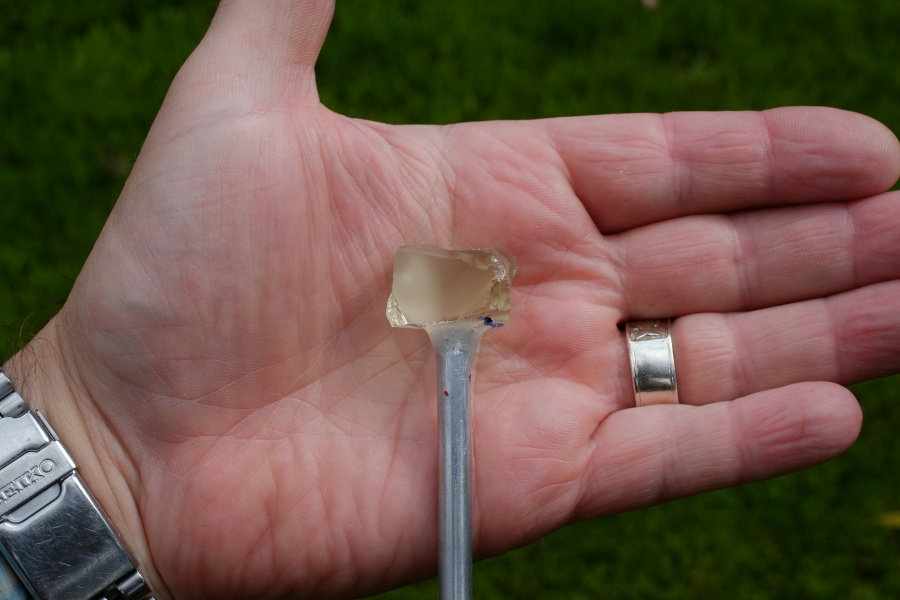
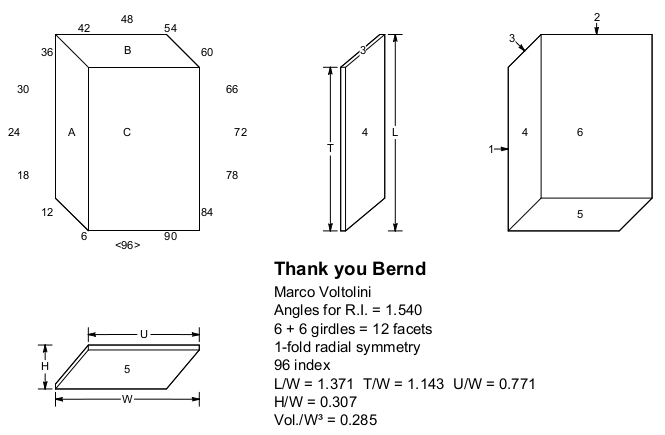
---------------------------
14/8/2019 - Infrasound - completed draft paper
Completed first draft of a paper detailing the Infrasound monitor. This is taking some time as I am writing and testing with my 14yr old. Fortunately he is quite sharp picking up concepts quickly. Looking good.
---------------------------
28/7/2019 - SidSpot - new antenna #2
Three boys helping one old git. They successfully wound over 1km of wire to form the primary loop of our new VLF antenna. Next - tuning.
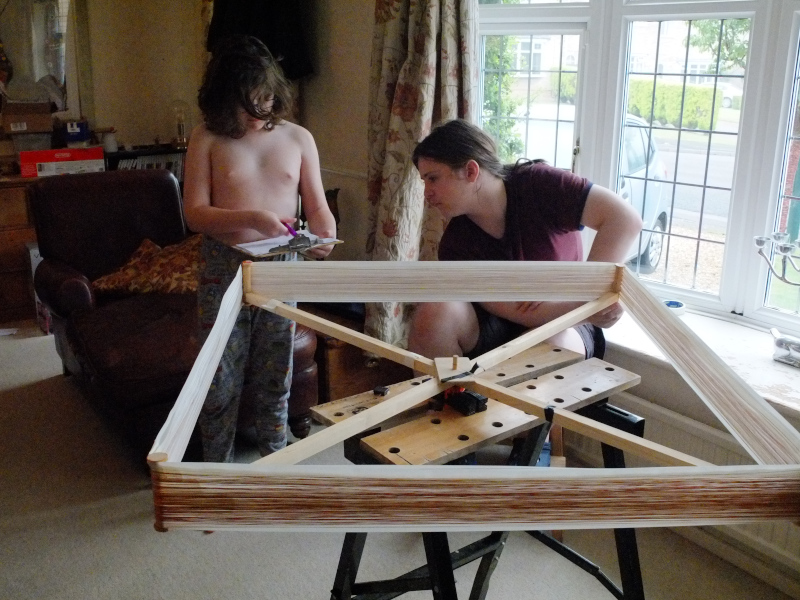
|
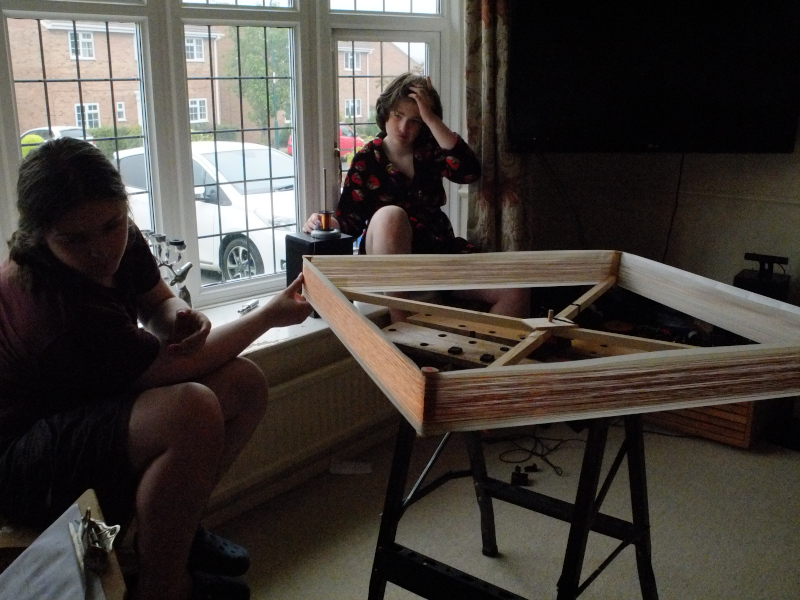
|

|
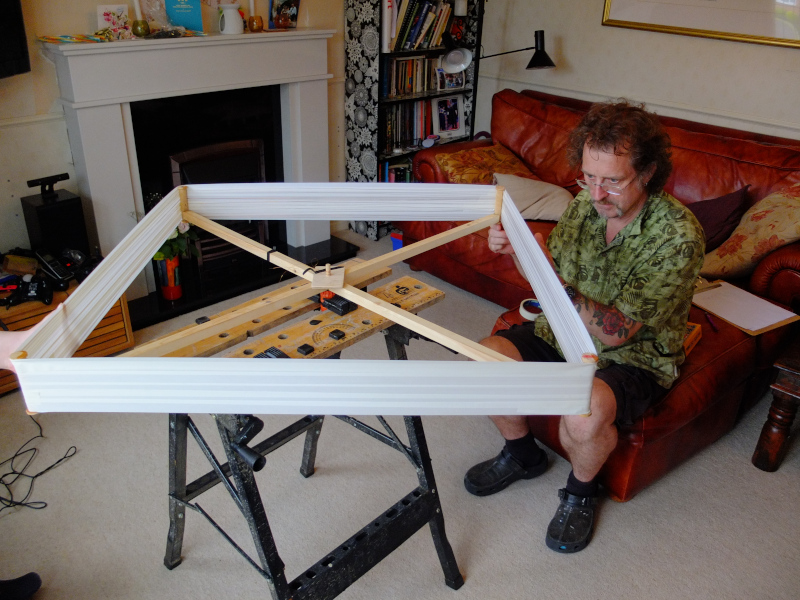
|
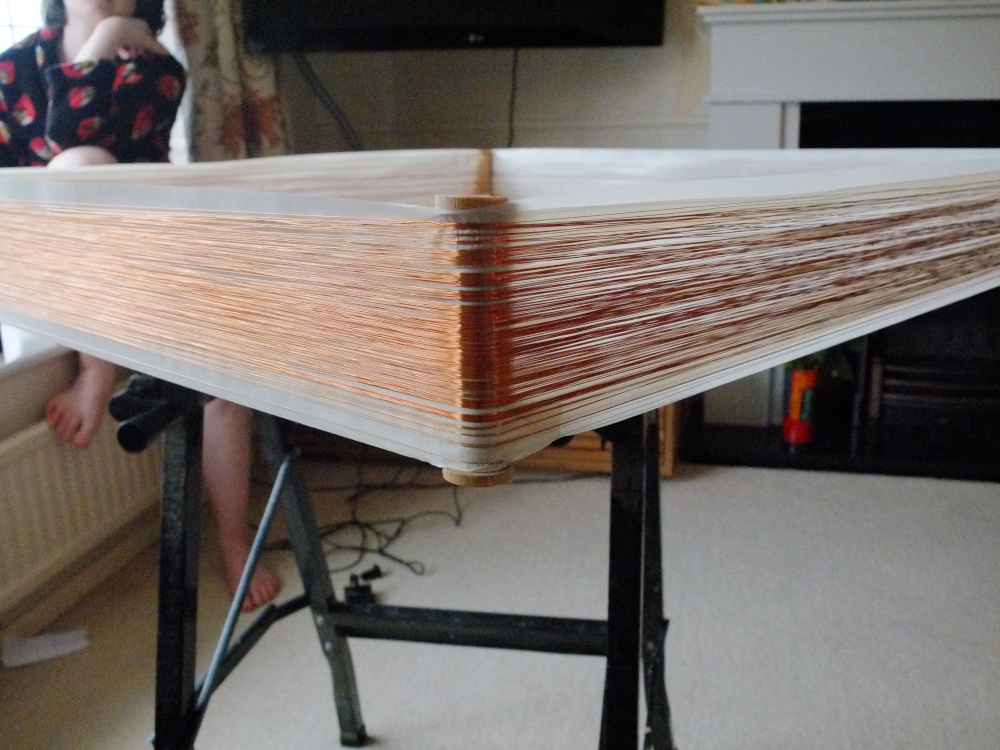
---------------------------
26/7/2019 - SidSpot - new antenna #1
The boys have started to wind the new VLF antenna for the SIDSpot project. This is an inductively coupled, double loop to recieve the magnetic component of VLF submarine transmissions. The secondary loop of 22 turns has been wound first onto a frame 90cm on each side, this connects to the tuner/amplifier. This loop inductively couples to the primary loop of around 300 turns which will be tuned to resonat at the desired frequency. 1.1 km of wire to wind tomorrow.

|
---------------------------
29/6/2019 - Back to Science Stuff
The Aurora Monitor is chugging away well and attracting notice. The Infrasound monitor needs the initial paper completing - still hanging fire a bit as I am considering how best to promote this as I have interest from a couple of geological societies. SIDSpot - solar flare monitor will be put online in a couple of weeks for beta testing.
I do like pushing the envelope a little and keep returning to chip design using VHDL. As far as I can tell there is but one programme in Europe, in Germany and limited to 25 kids, introducing pre-university students to this important area of computing/electronic engineering.
Must electronic engineers only meet this at degree level. The web is full of dire warnings about its complexity and difficulty. However I have got my head around the basics and if a thick 55yr old can then a keen A-level student should have little problem. I see an afterschool club 'Design a Chip' with a mix of digital theory (gates) and implementing simple designs on an F.P.G.A.
The government cretinously dumped A-level electronics a few years ago. Presumably budding electronic engineers are expected to study A-level physics which generally contains zero electronics. The only way presently for A-level students to get experience of electronics before jumping into such a recondite degree is either extra-curricula clubs or at home as a hobby. Good thing it is not essential to our economy and that electronic engineers are ten a penny.
I wonder what impact a student rocking up to a university interview day, listing maths, further maths and physics would make if they say. "B.T.W - in an afterschool club I implemented my own chip designs on a modern 400+MHz FPGA using VHDL". A course like this could be a first for the U.K. :-)
Need to check the state of the bank balance - but I will order a more up to date FPGA board. I should be able to work up a set of lessons and resources over the summer which I will likely put online.

---------------------------
29/6/2019 - Blue Topaz Star of David - hmmm
Stars of David are very tricky to get right. This looks good in the flesh though not so good at high magnification. Whilst I can place facets to better than 1 /40 degree the slightest misalignment become apparent at high mag. I can now see why some faceters place the star in the pavilion (bottom) as the angles are less critical.
I think I'll leave them for the mo. I am prepared to cut one to commission but the cutting time may well be in excess of 20 hours - this will be expensive.
For the moment my religious/mystical are various crosses/crusader shields, Yin-Yang and the Lucifer cut.
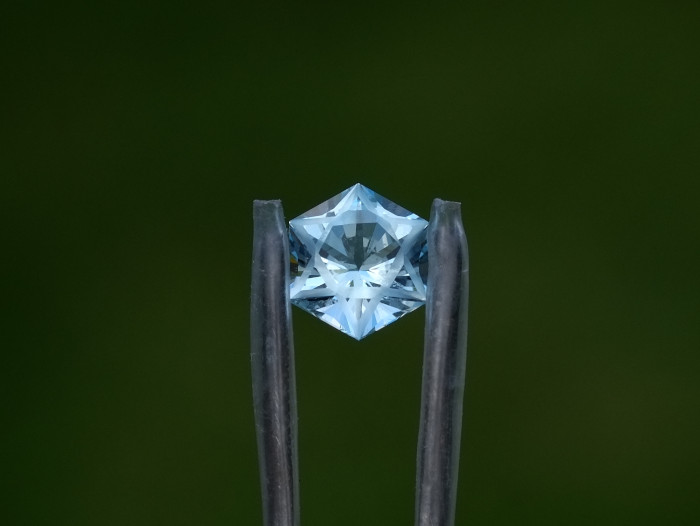
---------------------------
23/6/2019 - Blue Topaz Star of David
I have received some blue topaz from a dealer in N.Z. Currently working on a matched pair of Stars of David which should look nice in this light blue.
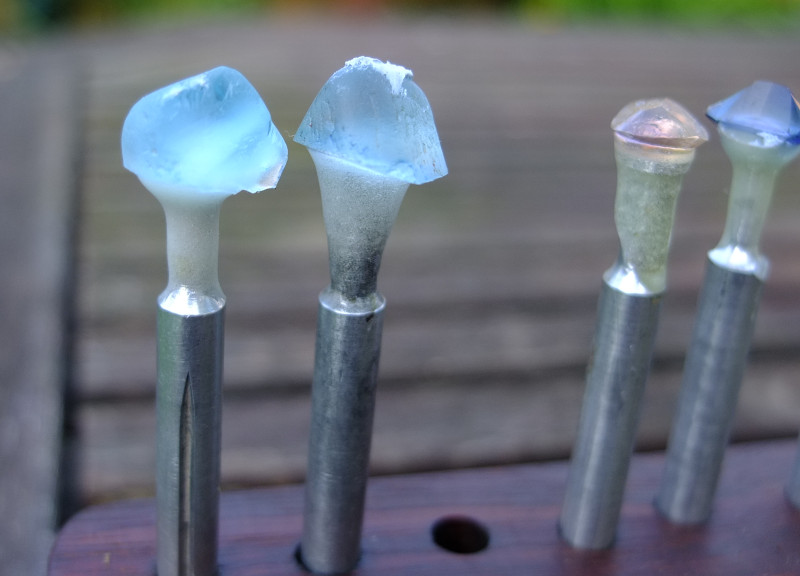
Preparing to polish the pavilion on the first stone
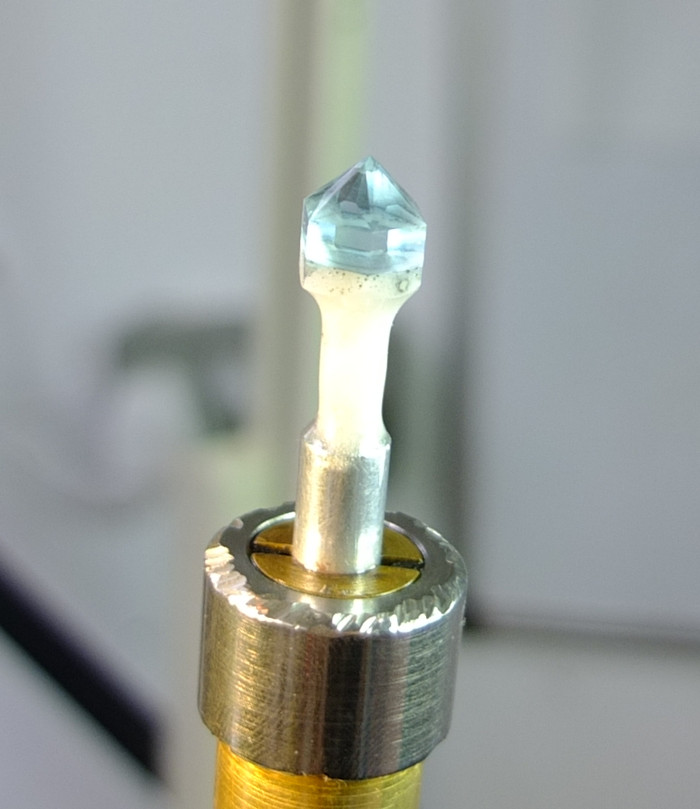
---------------------------
22/6/2019 - Rexy - Sapphire
'Rexy' by Robert Dodd - cut in sapphire
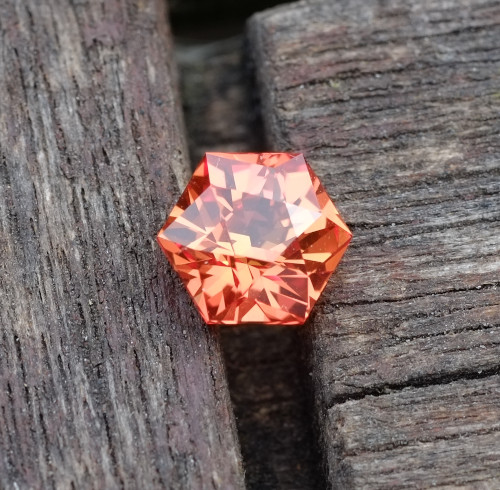
---------------------------
15/6/2019 - Smithsonian Bar - Tourmaline
'Smith Bar' by Jeff Graham - cut in natural moss tourmaline
---------------------------
12/6/2019 - Aurora Monitor Offline & Roadmap
I have taken the Aurora Monitor offline as it is behaving erratically. Will examine the PSU and sensor when I have a moment. I do however need to order 3 more as I am planning on making up a gradiometer over the summer. I will use the sensors from FGSensors so should be able to adjust the Aurora Monitor software for these.
On the subject of the summer I intend to complete the Infrasound write-up. Also write the papers on using GnupPlot for electron orbital simulation and one on a (hopefully) novel technique for efficiently detecting quasi-periodicity in very long random number sequences - I have never written a maths paper before! I will also put SIDSpot - Sudden Ionospheric Disturbance monitor online, we are presently bulding v2 of the circuitry and testing a new VLF antenna.
---------------------------
22/4/2019 - Chopper Overhead
A police helicopter passed overhead on 20/4. The bulk of the power was in the 1-3Hz range (fig:1), this was then enhanced with a wavelet transform (fig:2).
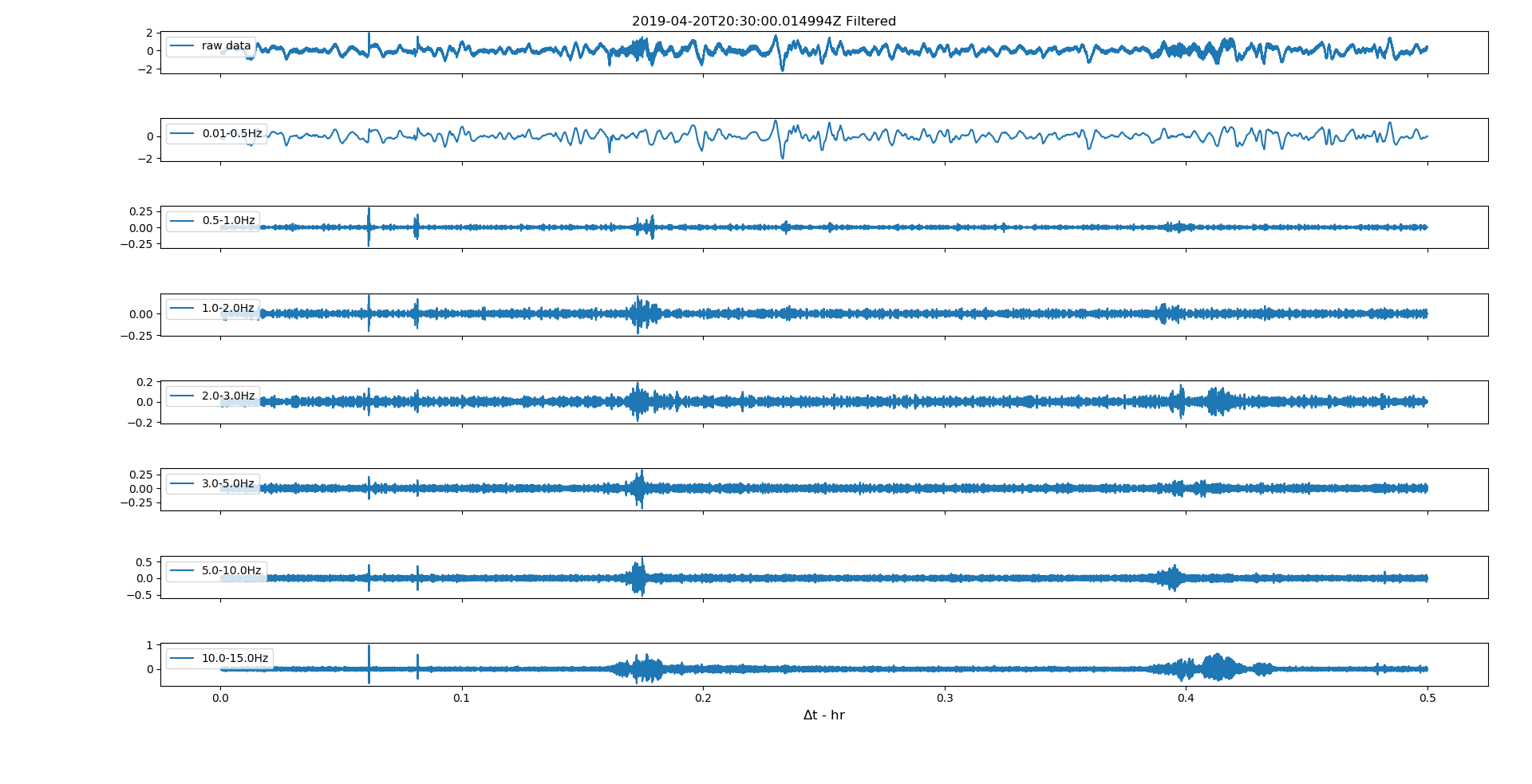
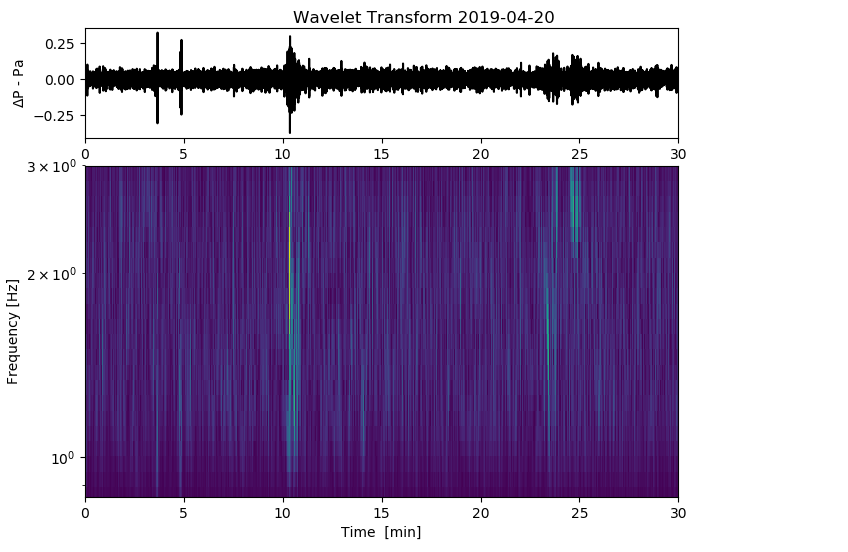
---------------------------
19/4/2019 - PLotting Electron Orbitals in Gnuplot and Python
Starting to play around with this. Initially I thought it may be of interest to pre-university physics/maths students. Hmmm - they would have to be keen. In the U.K. I believe that partial differentials are not on the further maths syallabus anymore and extension work beyond the syllabus is generally discouraged.
Anyhow, seems rather easier in gnuplot, I hope to publish a short guide to this by the summer. Will keep hammering away -- well past midnight - another day.
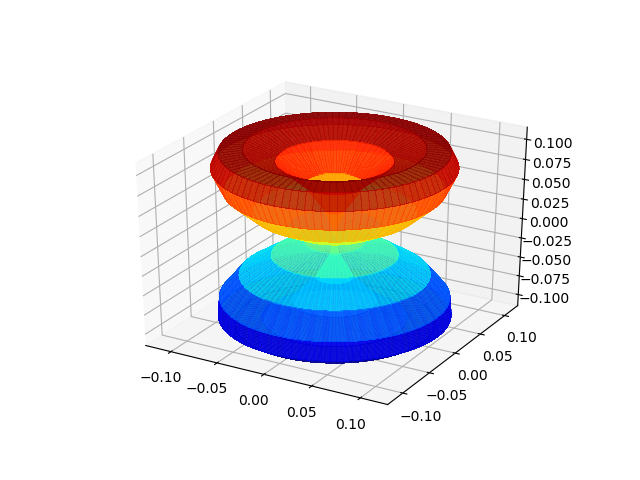
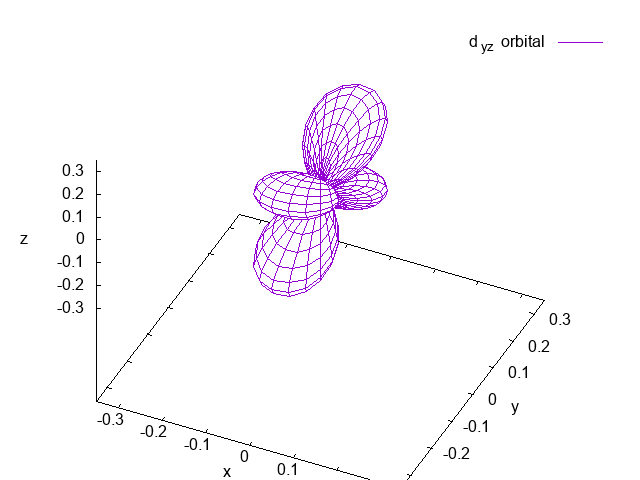
---------------------------
16/4/2019 - Infrasound - Seamer Windfarm - update - result!
I spoke too soon thinking we had not detected any infrasound at Seamer. I sat down with my 'test student' and he had a play with seismographic analysis software. Having filmed the turbine (vid) he determined a 'blade pass frequency' of 0.75Hz. We could reasonably expect this to be the fundamental frequncy and see signals at this and its harmonics. After trying various F.F.T. visualisations he did, exactly where predicted except for f0 which, whilst strong, was masked by noise (note -log scale). Chuffed :-)
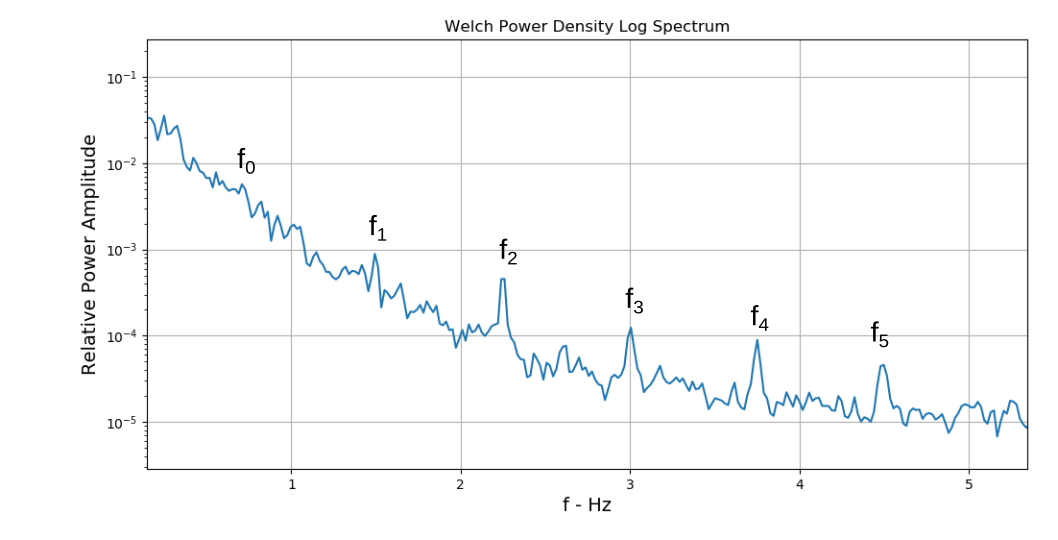

|
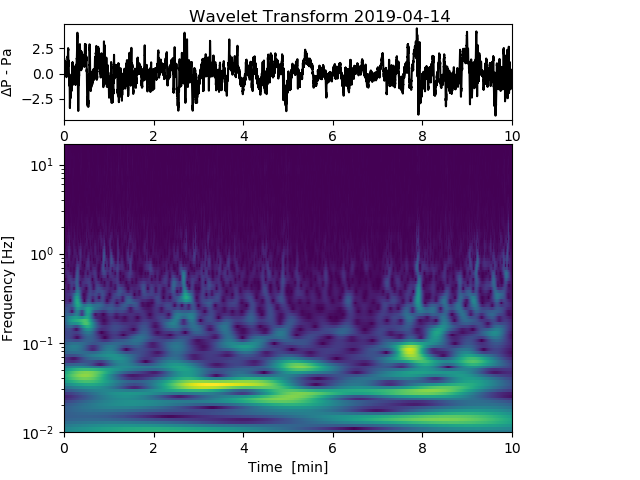
|
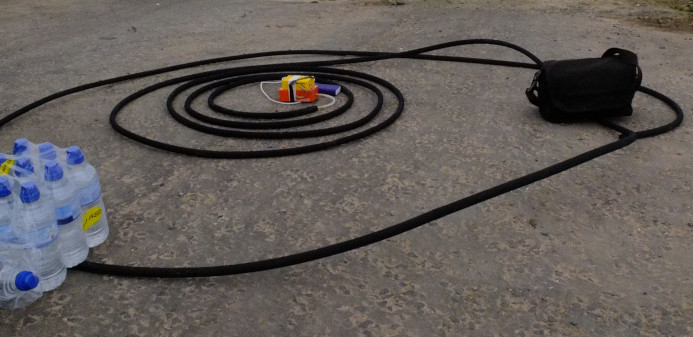
|
Tomorrow we hope to finalise the write-up which I intend to submit to an IOP journal. My test student has agreed to be a co-author. Rather pleasing, not many schoolkids get their names on peer-reviewed papers.
---------------------------
14/4/2019 - Infrasound - local windfarm vs car journey
My 14yr old 'test student' and I popped over to a local wind farm at Seamer to see if we could observe infrasound signals from close to the base of turbine #5. Yes and no. Signals during the car journey dwarfed those at the site itself.
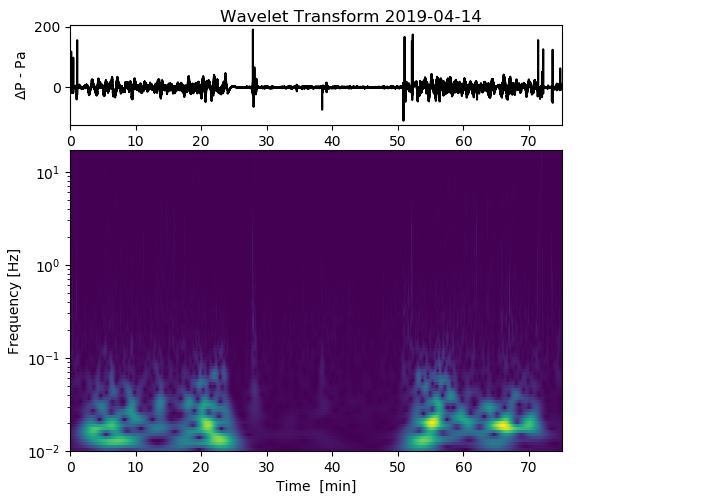
---------------------------
28/3/2019 - Easter Break Tasks
Been a bit busy of late but with an Easter break coming up I am planning to complete 3 papers and get SIDspot online - with a new antenna. The Infrasound Monitor write-up is almost ready for submission - just need a few more comparisions with another rig and, preferably an explosive test if I can get access to a local quarry. I have been working on plotting electron orbitals in gnuplot and should be able to get that polished up as well.
It has also been observed that the aurora monitor code does not scale correctly with the new fg-sensors, a replacement for the discontinued Speake FGM. I'll revisit this and calculate new scaling factors to correctly calculate the field.
---------------------------
25/2/2019 - Infrasound - reading 3km apart
Today I took one Infrasound monitor to work leaving the other running 3kn away at home in the loftspace. At work the monitor was left in a car with the windows slightly open. The traces are similar implying the expected long-range correlation due to significant infrasound sources (as opposed to, for example very localised winds). Most of the plots below have signals above 0.5Hz removed - more analysis required but is now midnight. At 3km the monitors are separated by about the wavelength of 0.1Hz sound. Now if we can get identical monitors in schools/home to form a network we could be cooking :-)
| Rig A: Home Loftspace | Rig B: 3km away |
|---|---|

|
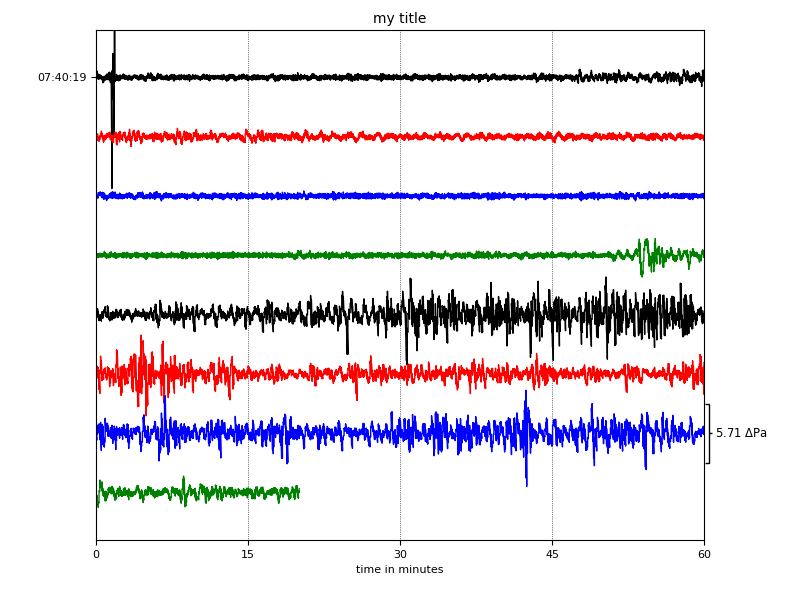
|

|

|
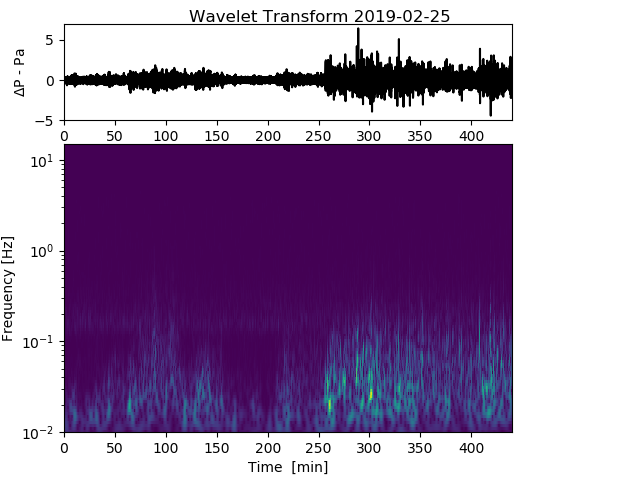
|
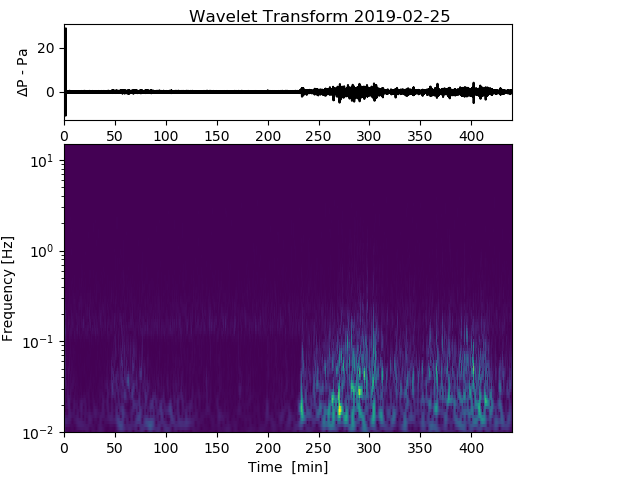
|
---------------------------
19/2/2019 - Arduino & OLED Display
Been playing around with an OLED display fed from an Arduino for my faceter protractor. After a bit of 'random monkey at the keyboard' I think I am getting the hang of it.
Some 40 yrs ago a teacher advised me to learn C - "everyone uses C". Typically, as a member of the awkward squad I refused and stuck with Algol & ForTran later adding Pascal, Python, Modula and Haskell. Teach was right. Horrible as C appears to me it is great for this sort of low level coding. (Rubbish for physics/maths simulations though IMHO.)
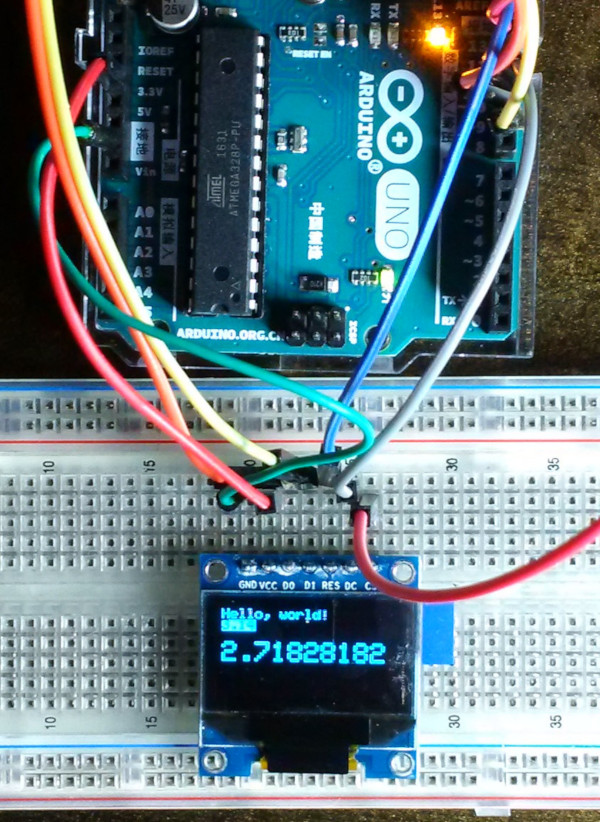
---------------------------
14/2/2019 - Faceting - high resolution protractor
Decided to retrofit an optical encoder to my facting machine as the cheap 'n cheerful one is playing up. I've ordered a 3600 cpr optical encoder from the US (US Digital E6), with quadrature encoding this should give a resolution of 0.025 degrees. I'll use an Arduino with a panel display for the readout and maybe fit a pressure sensor to the quill whilst I am at it. This probably means very little to most people - but its a cheap(ish) way of measuring angles on a machine bloody precisely.
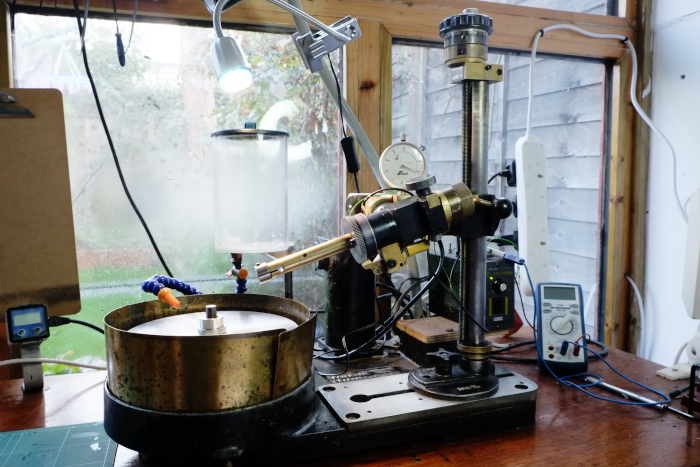
---------------------------
13/2/2019 - Big 200
Downloads of the Aurora paper from IOP have now hit 200 and today I received a very nice email from a school in Scotland that is building one - nice to get positive feedback, thanks. :-)
Chuffed to find that my logging software is now being used for a Raspberry PI based cosmic ray detector.
---------------------------
9/2/2019 - Infrasound: Beach, Windfarm, Porous Hose and Cube
Spent some time today on Redcar beach opposite the Teeside Windfarm about 1km away. Well it was certainly consistently windy, the long flats resulting in a strong low ground wind parallel to the waves. The blades rotated at about 0.2Hz and one would thus expect signals at harmonics of this.
I tested both a 15m porous hose and a 30cm rigid foam cube windshield both on the exposed beach subjects to continuous strong ground level wind. The hose significantly attenuated pressure variation above ~0.5Hz with little effect below.
There was little evidence of the expected low frequency sound from the windfarm!
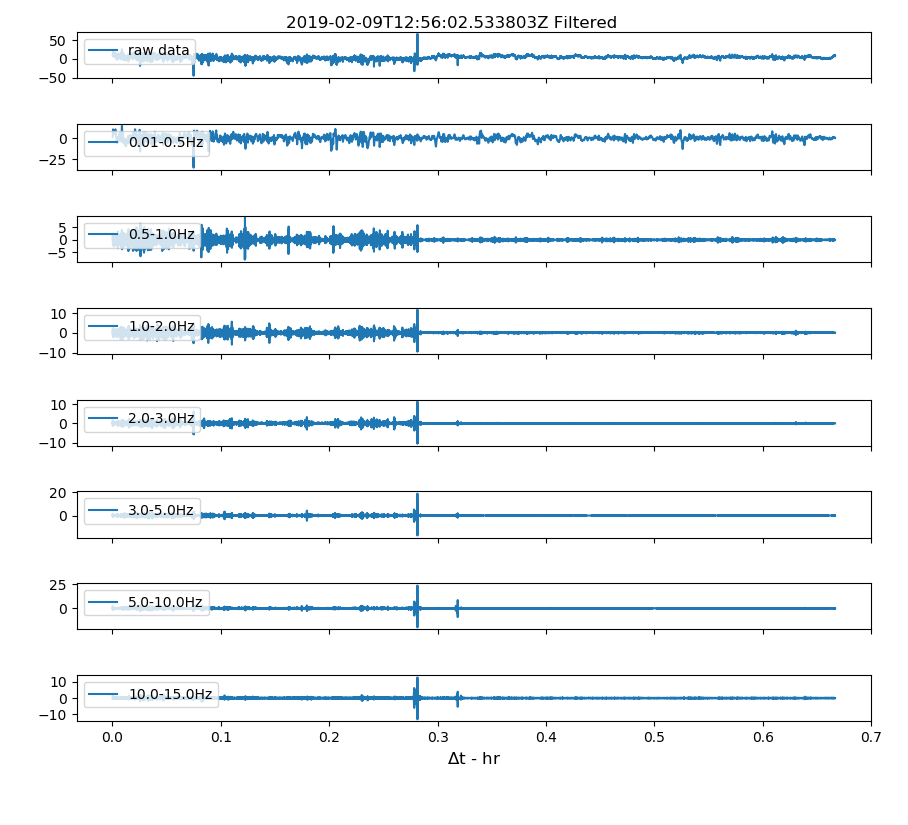
|
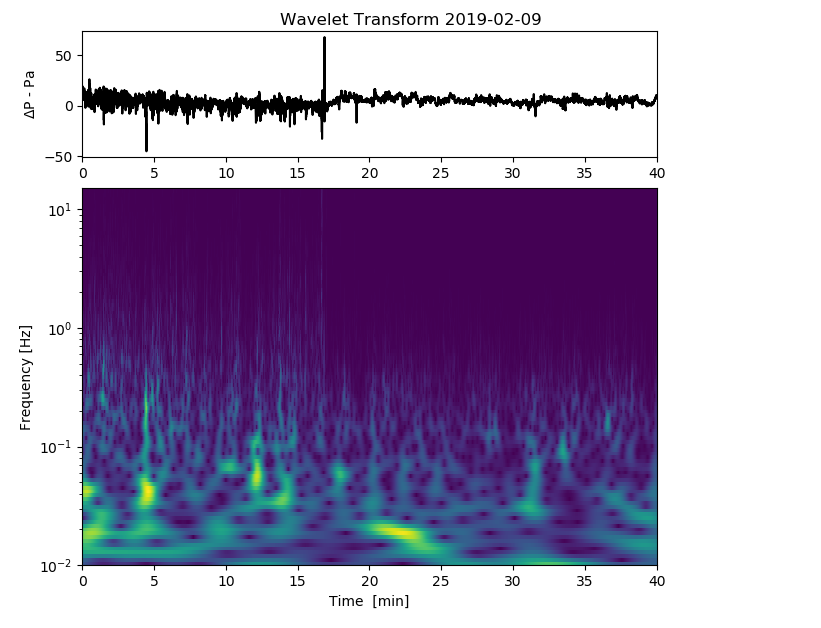
|
and now it's past midnight and I am going to bed...................
---------------------------ooo00O00ooo---------------------------
8/2/2019 - Wind's Up & Income's Down
Rather breezy, now my foot appears to be recovering I am hoping to get out to Redcar tomorrow to try and observe Infrasound from the 62 MW Teesside Wind Farm.
I observe that with ~1500 hrs spent on developing projects over the past few years I have realistically lost £20k - £30k of income from my secondary employments. To this should be added the cost of travelling to display events, purchasing development kit such as power supply, scope etc. as well as the rather lower cost of the actual components. I certainly do not regret doing this and will not stop but .. hmm .. scary ...
At least the ball seems to be starting to roll now.
---------------------------ooo00O00ooo---------------------------
2/2/2019 - Aurora Monitor - something is happening (up there!)
One can see at a glance that the usual diurnal cycle is disrupted - BGS and other international monitors concur.
Look to the skies....
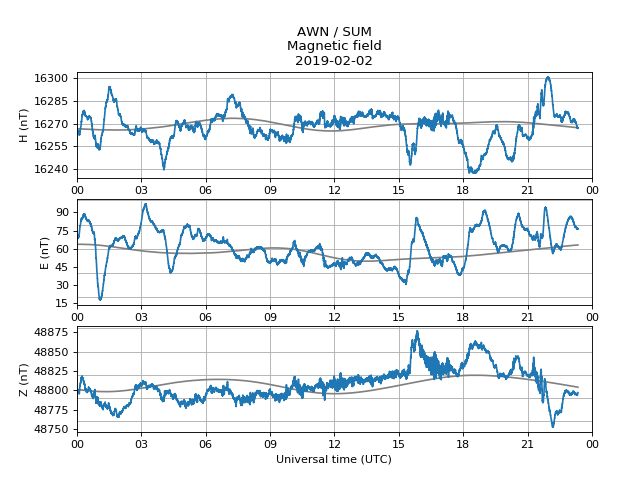
---------------------------ooo00O00ooo---------------------------
27/1/2019 - Infrasound - ObsPy - c.w.t. vs F.F.T.
Spent some time playing with simple fourier transform v continuous wavelet transform data visualisation. So far cwt seems most useful.
Additionally added a simple GUI to my python plotting routines.
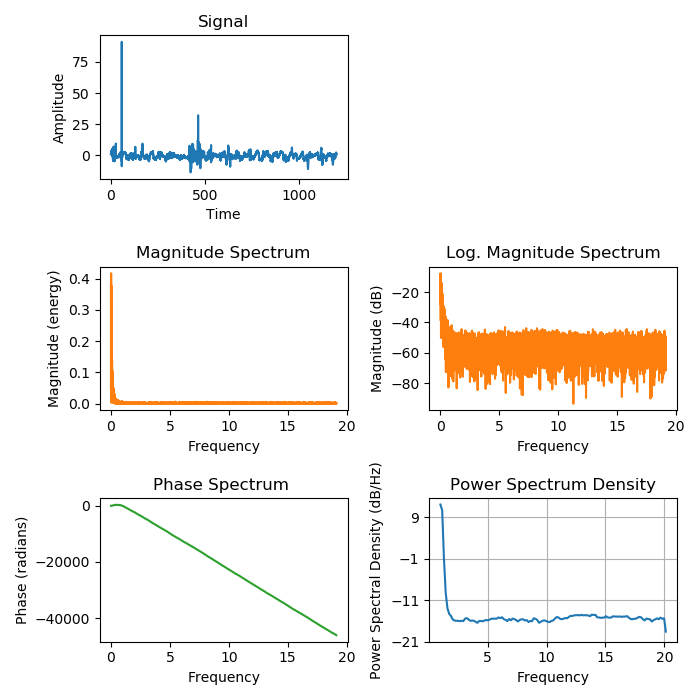
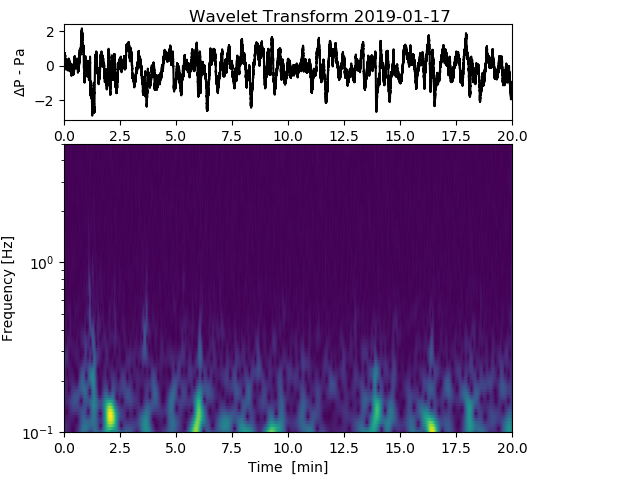
---------------------------ooo00O00ooo---------------------------
25/1/2019 - Infrasound - porous hose - initial impressions
Little difference between the hose and the 30cm rigid foam pond filter so far.
OK. The pond filter sits on the ground whilst the hose is suspended about 1m up the 2m garden fence - it would be better placed on the ground but that is not practical at the moment. The locatation is already pretty enclosed and the wind has been low for the past few days. Looking at various spectral plots no dramatic differences are apparent at various bands from 0.01Hz to 10Hz.
I'll take both monitors out to the beach or moorland when the wind is up to see if there is a difference in an exposed location.
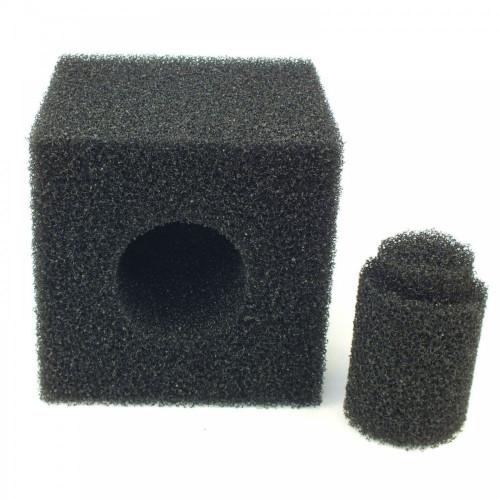
---------------------------ooo00O00ooo---------------------------
20/1/2019 - Infrasound Monitor - porous hose
It is common to use porous garden hose as a windshield for Infrasound monitors (see pic 4/5/2018 below). Some arrived saturday and I made a fitting for the monitor. Initial results are interesting. Crude studies indicate that the hose passes signals below ~5Hz with little or no attenuation - spot on. This is inline with a number of papers I have read from the the US. I was hoping to go along to Redcar seafront to observe signals from the massive windfarm off-shore but, as luck would have it there was very little wind.
Next weekend I will post side by side comparisons of the hose with the rigid foam cube windshield (actually a pond filter) that I currently use outdoors.
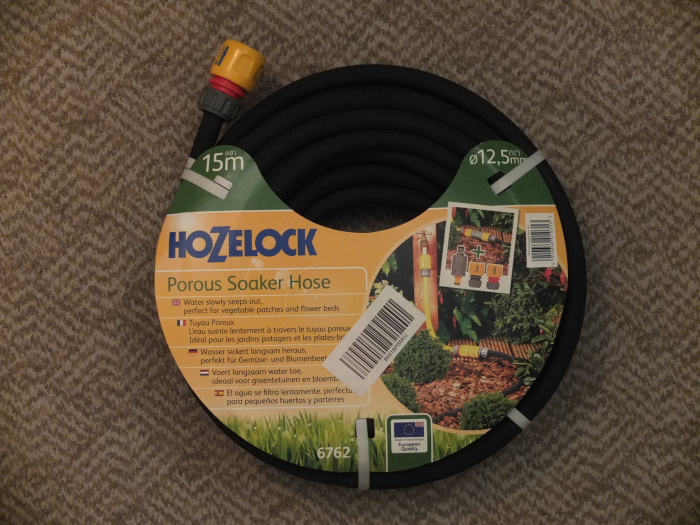
---------------------------ooo00O00ooo---------------------------
2/1/2019 - Infrasound Monitor - A Noisy Night
Both detectors picked up strong signals in the range 0.01-1.0 Hz between 1 and about 3 am. Quietening down for the rest of the night. Not sure if I know why however satisfying to see that they both record similar traces
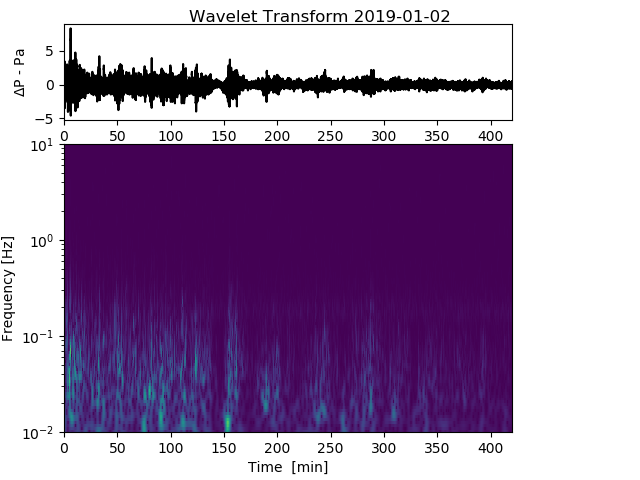
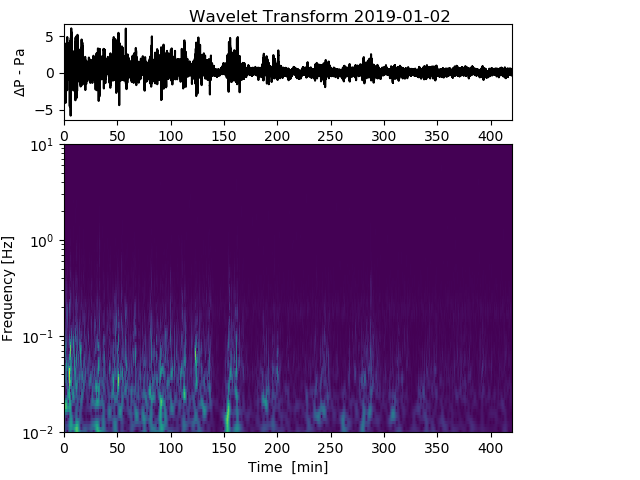
---------------------------ooo00O00ooo---------------------------
1/1/2019 - Infrasound Monitor - New Year Fireworks
First hour of the new year - fireworks popping off for the first 30 minutes.
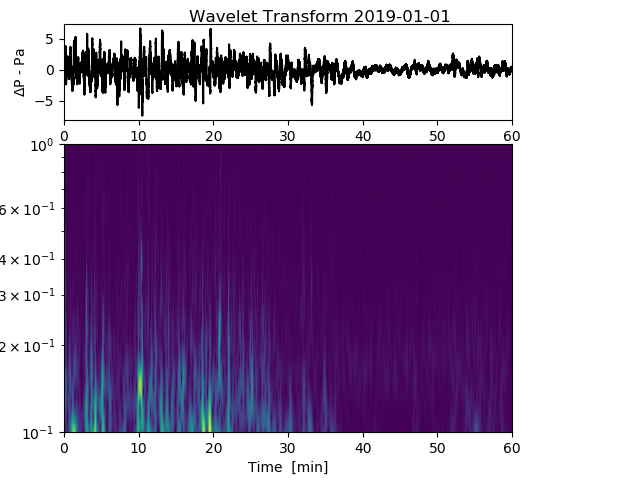
---------------------------ooo00O00ooo---------------------------
1/1/2019 - Aurora Monitor - Beach Test
Quick test in on Saltburn beach yesterday with the monitor about 200m from the surf. Waves were small at about 0.5m. Some evidence of enhanced signal in the range 0.2-0.7Hz but rather more testing required. Top image is from my loft - about 5 km from beach - bottom is the same period (+/- 1min) on the beach.
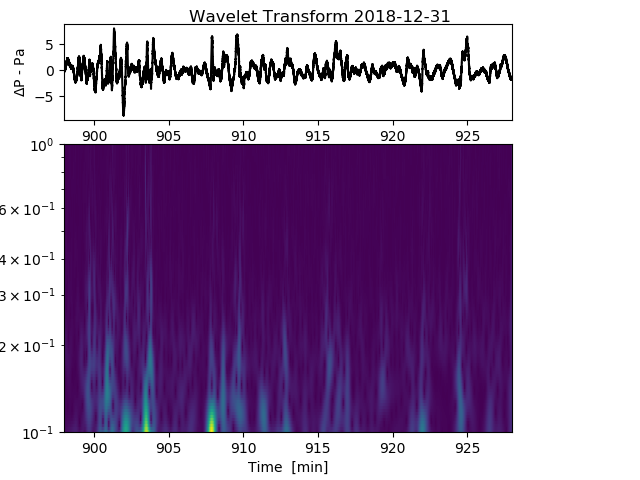
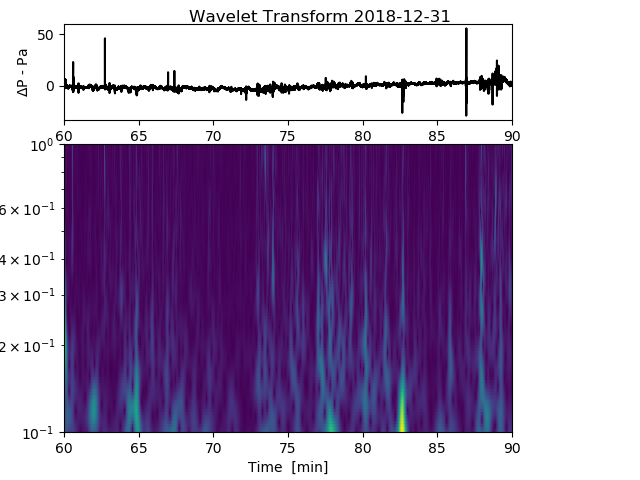
---------------------------ooo00O00ooo---------------------------
